SWT/KWS MARA MOBILE VETERINARY UNIT AUGUST 2022









August has been relatively windy and occasionally overcast leading to moderate down pours which have aided vegetation regeneration. This month has been quiet with comparatively fewer cases witnessed. This can be attributed to the low population of wild animals within the reserve owing to their displacement by livestock incursion. The few wild animals left within the reserve have borne the blunt of human wildlife conflict as livestock competes with wildlife for limited resources
The Mara Veterinary Unit attended to 4 cases in August. These cases included a snared elephant, a speared buffalo, a giraffe with a wound on its left forelimb at the fetlock area and a zebra with an arrowhead embedded in its gluteal muscles.

We express our gratitude to the Almighty for granting us the opportunity to be stewards of His creation. This would not have been possible without the ongoing support received from Elizabeth Scarlet through the Sheldrick Wildlife Trust. We also wish to acknowledge the support we have received from the conservation partners in the Mara ecosystem including members of the community who have reported wildlife case that require veterinary intervention. With such great partnerships, we will surely achieve more.
Date
Area Found
Kiombo Maasai Mara NR Spear Spear lodged into the left ischium area
Triangle Natural Causes Seen with a wound on its left forelimb at the fetlock area
Mara Triangle Snared Lameness caused by a snare deeply embedded into the right hind leg
North Conservancy Serian Camp Arrow Arrowhead embedded in the right gluteal muscles
treated
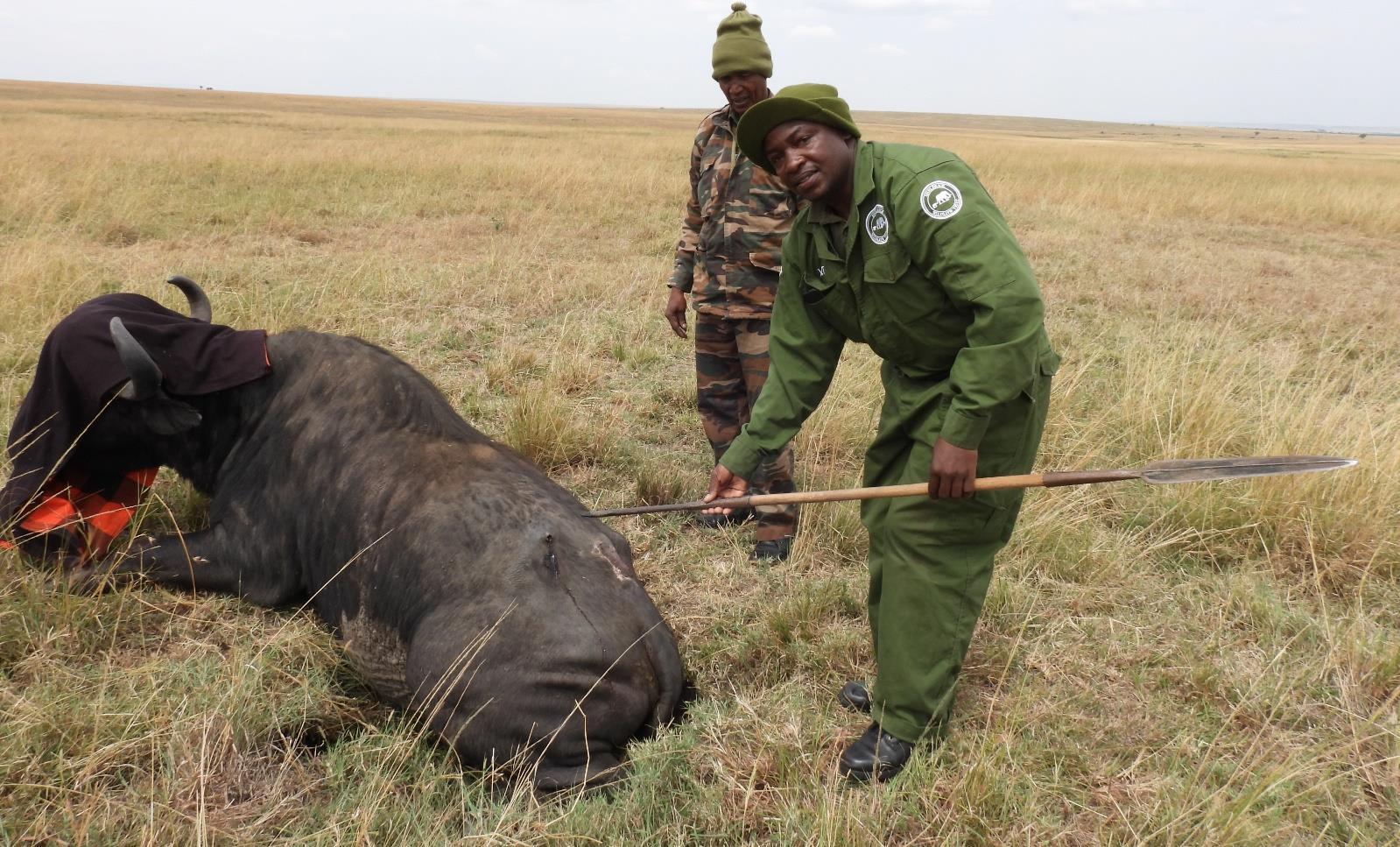

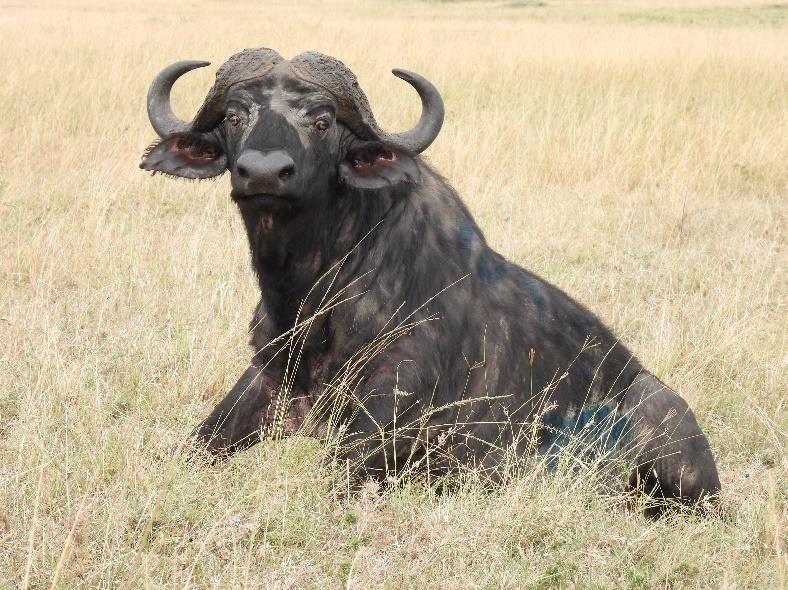
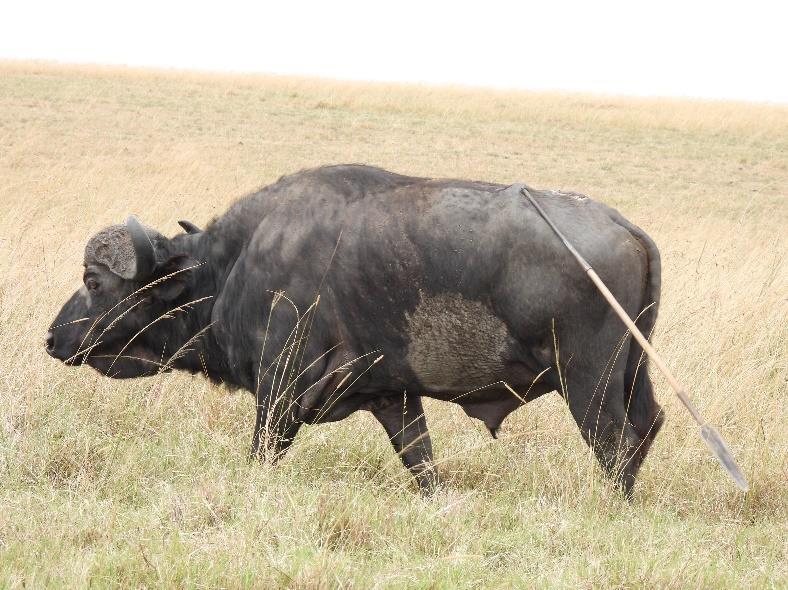
Rangers near Ol Kiombo airstrip reported seeing an adult male buffalo with a spear lodged in the animal’s left ischium area.

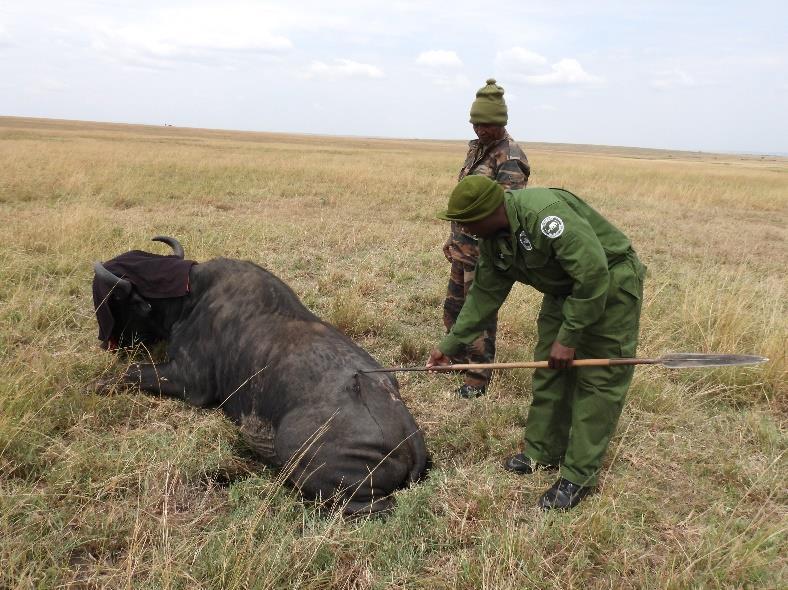
The buffalo was found tailing a breeding herd with a spear still embedded in the ischium area. It was suspected that the buffalo was speared by cattle herders who had intruded into the reserve. The animal was darted from a vehicle with 10mgs Etorphine and 180mgs Azaperone. The dart landed on the right hind limb, and the animal went down on sternal recumbency 5 minutes later. The spear was pulled out carefully which caused blood tinged discharge to be expelled from the wound. The wound was disinfected with Hydrogen Peroxide and Iodine, wet green clay was then packed into wound followed by a topical Tetracycline wound spray. 8,000mgs Tetracycline and 15ml Dexamethasone were injected intramuscularly before anaesthesia was reversed 20 minutes post darting. The buffalo rose 3 minutes later and walked away.
The buffalo has a good prognosis.
The Mara Triangle Tourism Warden spotted and reported an adult male giraffe with a wound on its left forelimb at the fetlock area. It was suspected that the giraffe was injured when it stumbled on a sharp rock outcrop, tree stump or log.

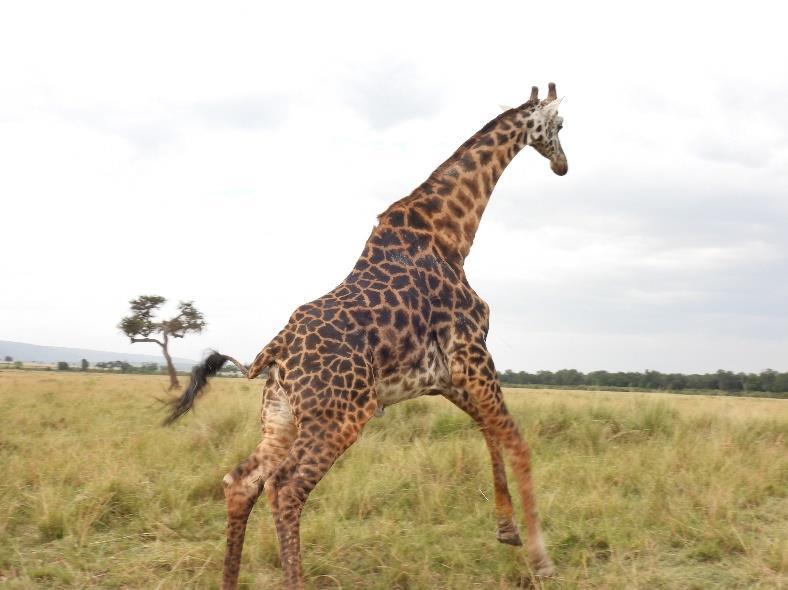
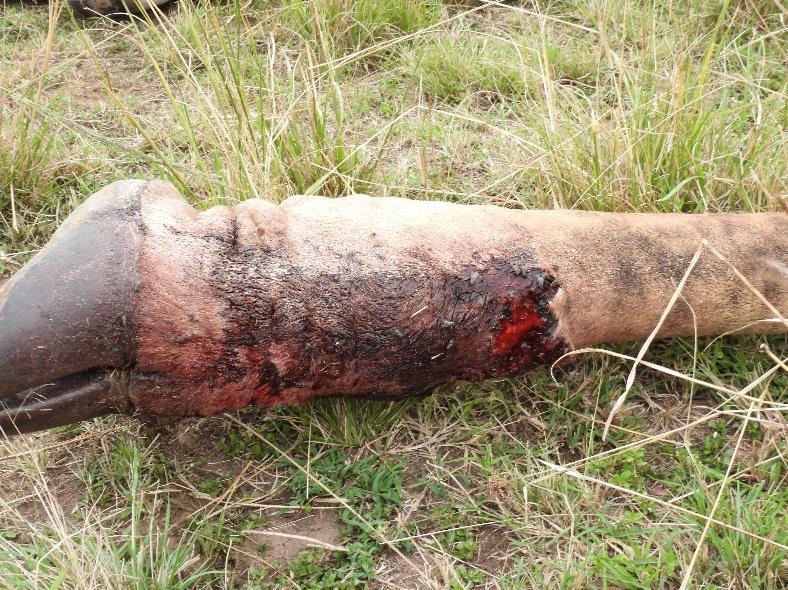

The giraffe was darted from a vehicle with 15mgs Etorphine and 25mgs Azaperone. 3 vehicles were used to prevent the giraffe from escaping to a nearby thicket. The giraffe was roped down 7 minutes post darting. It went down on its left side then it was blindfolded, manually restrained and the anaesthesia reversed with 48mgs Diprenorphine The uninjured limbs were held away from the injured one by anchoring them to a vehicle with a rope A foul smelling, maggot infested wound was observed on the injured limb The wound was cleaned with Hydrogen Peroxide and Iodine. 200mgs Ivermectin was smeared onto the wound to kill the maggots followed by green clay Tetracycline wound spray was the applied topically The giraffe was released after 10,000mgs Tetracycline Hydrochloride and 40mgs Dexamethasone were administered intramuscularly and 200mgs Ivermectin was given via SQ route.
The Mara Triangle warden reported a lame adult female elephant which had a traumatic wound around the middle of its right hind leg caused by a deeply embedded snare


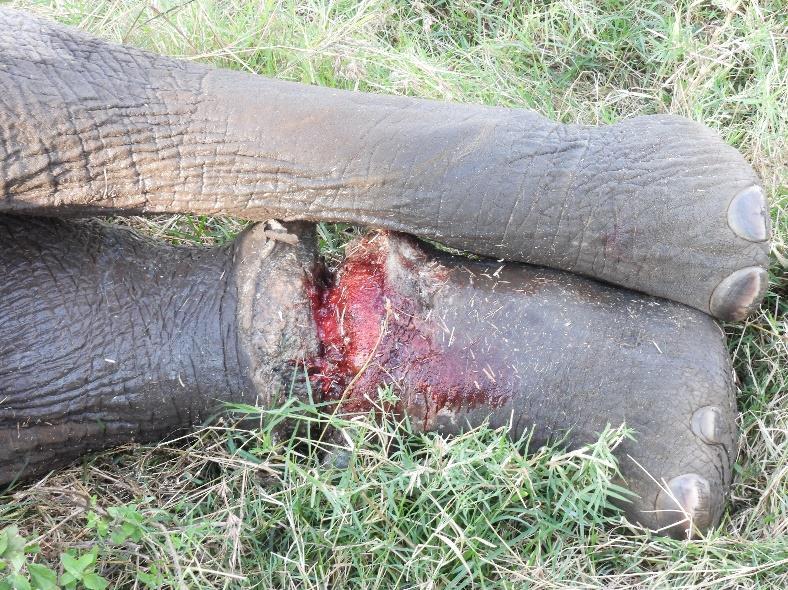
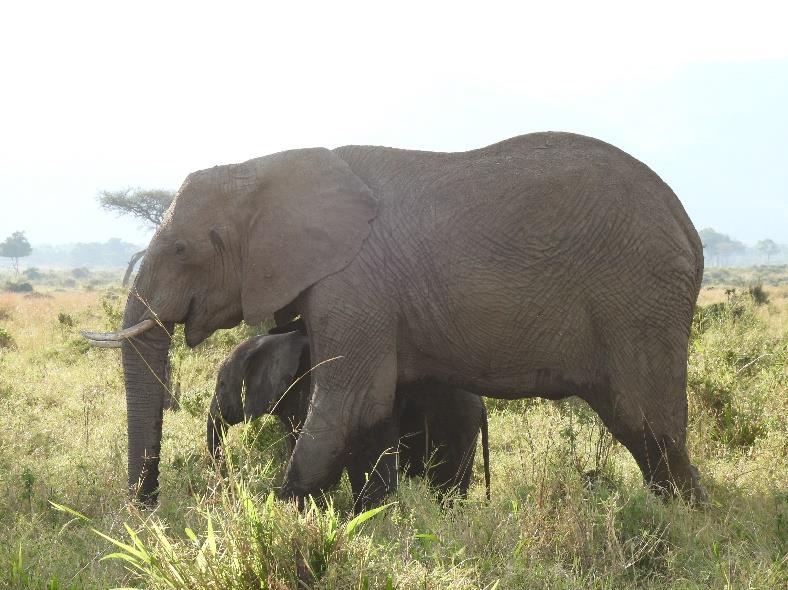
The elephant was found browsing in a marshy area with its family. It was driven out of this area with a helicopter provided by the CEO Mara Elephant Project. The wounded elephant was darted on the left rump with 18mgs Etorphine. It went down in right lateral recumbency 6 minutes later. The calf in tow joined another elephant family which was about 30 meters away. The snare was cut off then the wound was cleaned with water, disinfected with Hydrogen peroxide and flushed with Iodine. Iodinated wet green clay was smeared on the wound, and Tetracycline wound spray was applied topically. 60mgs Dexamethasone was injected into ear vein followed by a similar dose intramuscularly. 20,000mgs Tetracycline was also administered as a broad spectrum antibiotic and 50ml Multivitamin to help boost weight gain as she had already begun losing body condition. Anaesthesia was reversed 25 minutes post darting with 80mgs Naltrexone and 36mgs Diprenorphine. The elephant rose a few minutes later and walked away.
The elephant has a fair prognosis though normal limb contours will not be fully attained.
A zebra was spotted by the Warden with an arrowhead embedded in the right gluteal muscles. It was suspected that the zebra was shot with the arrow while it was in one of the nearby farms.
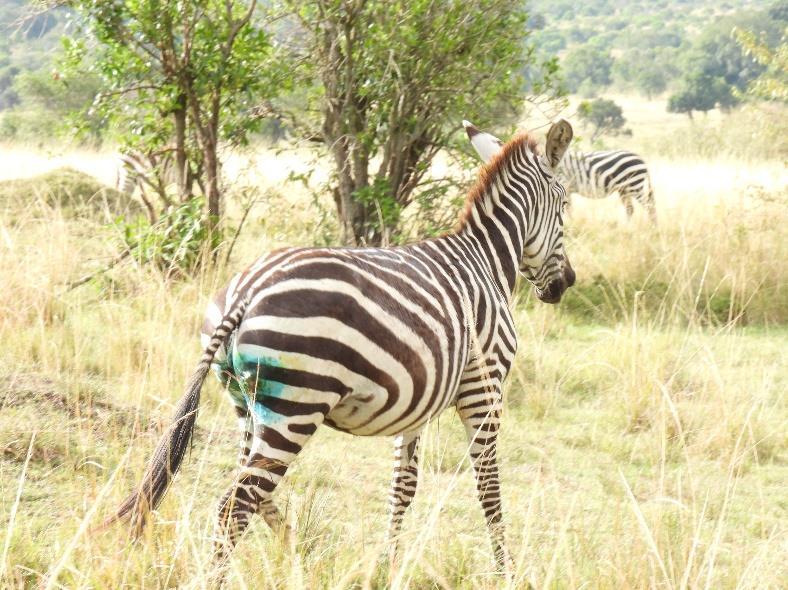



The zebra was darted on the right rump with 4mgs Etorphine and 50mgs Azaperone. It went down on left lateral recumbency 5 minutes later. The zebra was blindfolded and doused with water to help cool it down. The arrowhead was carefully pulled out by the tang with a pair of pliers A small incision was made to allow for the barbs to be pulled out. The penetrating wound caused by the arrow was still fresh, it was disinfected with Hydrogen Peroxide and Iodine, packed with green clay then Tetracycline spray was applied topically 4,000mgs Tetracycline Hydrochloride and 15ml Multivitamin was administered intramuscularly. The dart wound was sprayed with Tetracycline wound spray then the zebra’s eyes were oiled with Cloxacillin ointment. 40mgs Ivemectin was also administered subcutaneously. The anaesthesia was reversed with 12mgs Diprenorphine injected into the jugular vein. The zebra rose 2 minutes later and re joined its family.
The zebra has a good prognosis.